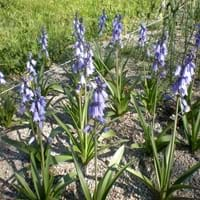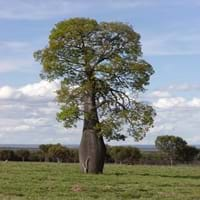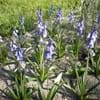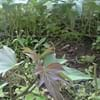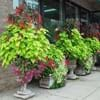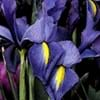Life Span
Perennial
Biennial
Type
Bulb or Corm or Tuber
Tree
Origin
Southern Europe, Western Europe, Northern Africa
Australia
Types
Hyacinthoides flahaultiana, Hyacinthoides mauritanica, Hyacinthoides reverchonii
Narrowleaf Bottle Tree, Pink Flame Tree, Rusty Kurrajong
Number of Varieties
Not Available
Habitat
Parks, wastelands, Waysides, Woodland edges
Subtropical climates, Subtropical forests
USDA Hardiness Zone
4-10
9-11
Sunset Zone
21,22
H1, H2, 15, 16, 17, 18, 19, 20, 21, 22, 23, 24
Habit
Clump-Forming
Upright/Erect
Flower Color
White, Blue, Pink, Blue Violet
Crimson, Orange Red
Flower Color Modifier
Bicolor
Bicolor
Fruit Color
Not Available
Dark Red, Sienna, Chocolate
Leaf Color in Spring
Green
Not Available
Leaf Color in Summer
Light Green
Red, Green, Light Green
Leaf Color in Fall
Several shades of Green
Green
Leaf Color in Winter
Light Green
Green
Plant Season
Spring
Spring, Summer
Sunlight
Partial Sun, Partial shade
Full Sun, Partial Sun
Type of Soil
Loam
Loam, Sand
The pH of Soil
Acidic, Neutral
Acidic, Neutral
Soil Drainage
Well drained
Well drained
Bloom Time
Spring, Late Spring
Early Spring, Spring, Late Spring, Early Summer
Tolerances
Drought
Pollution, Drought
Where to Plant?
Ground
Ground
How to Plant?
By dividing rhizomes, tubers, From bulbs, Seedlings
Grafting, Seedlings
Plant Maintenance
Medium
Medium
Watering Requirements
Average Water Needs, Do Not over Water, Requires regular watering
Average Water Needs, Do Not over Water, Requires regular watering
In Summer
Lots of watering
Lots of watering
In Spring
Moderate
Moderate
In Winter
Average Water
Average Water
Soil pH
Acidic, Neutral
Acidic, Neutral
Soil Type
Loam
Loam, Sand
Soil Drainage Capacity
Well drained
Well drained
Sun Exposure
Partial Sun, Partial shade
Full Sun, Partial Sun
Pruning
Pinch Tips, Remove damaged leaves, Remove dead branches, Remove dead leaves, Remove dead or diseased plant parts
Remove branches, Remove damaged leaves, Remove dead branches, Remove dead leaves, Remove dead or diseased plant parts, Remove deadheads
Fertilizers
High amounts of nutrients, organic fertlizers
Nitrogen
Pests and Diseases
Red blotch
Red blotch
Plant Tolerance
Drought
Drought, Pollution
Flower Petal Number
Single
Single
Foliage Texture
Medium
Medium
Foliage Sheen
Glossy
Glossy
Attracts
Birds, Butterflies, pollinators
Hummingbirds
Allergy
Pollen
allergic reaction, Skin irritation
Aesthetic Uses
Showy Purposes
Showy Purposes
Beauty Benefits
Not Available
Not Available
Environmental Uses
Air purification
Air purification, Nesting sites for birds, Shadow Tree, Wildlife
Medicinal Uses
Not Available
Not Available
Part of Plant Used
Flowers
Root, Seeds
Other Uses
Beneficial species for attracting pollinators, Decoration Purposes, Showy Purposes, Used for Landscaping
Used as Ornamental plant
Used As Indoor Plant
No
No
Used As Outdoor Plant
Yes
Yes
Garden Design
Container, Cutflower, Mixed Border, Rock Garden / Wall, Wildflower
Feature Plant, Shade Trees, Street Trees, Tropical
Botanical Name
HYACINTHOIDES hispanica
BRACHYCHITON rupestris
Common Name
Spanish Bluebell
Australian Flame Tree, Flame Bottle Tree, Illawarra Flame Tree
In Hindi
Bluebell plant
बोतल ट्री
In German
Endymion Pflanze
Flaschenbaum
In French
plante Bluebell
Bouteille Arbre
In Spanish
planta Bluebell
Árbol de la botella
In Greek
φυτό Bluebell
Μπουκάλι Δέντρο
In Portuguese
planta Bluebell
Bottle Tree
In Polish
Bluebell roślin
Butelka Drzewo
In Latin
Bluebell herba
Utrem ligno
Phylum
Magnoliophyta
Magnoliophyta
Class
Liliopsida
Magnoliopsida
Family
Liliaceae
Sterculiaceae
Genus
Hyacinthoides
brachychiton
Clade
Angiosperms, Monocots
Angiosperms, Eudicots, Rosids
Tribe
Hyacintheae
Sterculieae
Subfamily
Scilloideae
Sterculioideae
Season and Care of Bluebell and Bottle Tree
Season and care of Bluebell and Bottle Tree is important to know. While considering everything about Bluebell and Bottle Tree Care, growing season is an essential factor. Bluebell season is Spring and Bottle Tree season is Spring. The type of soil for Bluebell is Loam and for Bottle Tree is Loam, Sand while the PH of soil for Bluebell is Acidic, Neutral and for Bottle Tree is Acidic, Neutral.
Bluebell and Bottle Tree Physical Information
Bluebell and Bottle Tree physical information is very important for comparison. Bluebell height is 30.00 cm and width 15.00 cm whereas Bottle Tree height is 2,743.20 cm and width 1,500.00 cm. The color specification of Bluebell and Bottle Tree are as follows:
Bluebell flower color: White, Blue, Pink and Blue Violet
Bluebell leaf color: Green
Bottle Tree flower color: Crimson and Orange Red
- Bottle Tree leaf color: Not Available
Care of Bluebell and Bottle Tree
Care of Bluebell and Bottle Tree include pruning, fertilizers, watering etc. Bluebell pruning is done Pinch Tips, Remove damaged leaves, Remove dead branches, Remove dead leaves and Remove dead or diseased plant parts and Bottle Tree pruning is done Remove branches, Remove damaged leaves, Remove dead branches, Remove dead leaves, Remove dead or diseased plant parts and Remove deadheads. In summer Bluebell needs Lots of watering and in winter, it needs Average Water. Whereas, in summer Bottle Tree needs Lots of watering and in winter, it needs Average Water.
